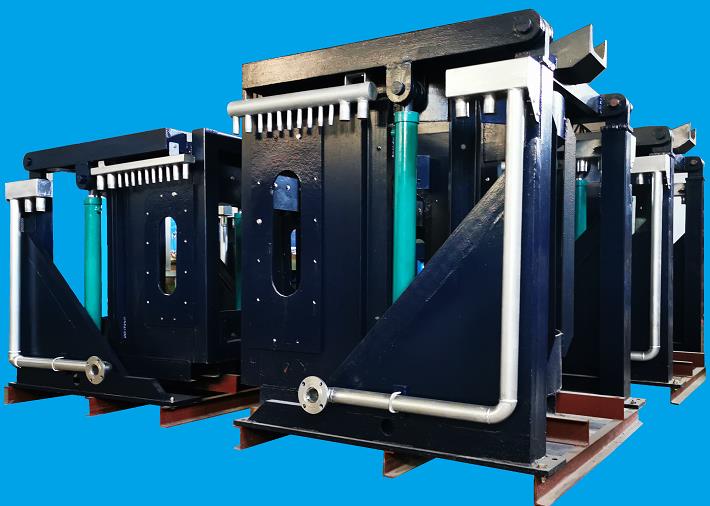Requirements for lining fabrication of large induction smelting furnace
When making furnace lining of induction smelting furnace, pay attention to the uniformity and compactness of ramming.
① The tamping site must be clean and free of debris.
② Before tamping, all tools used shall be checked once, and there shall be no rust and slag falling.
③ Check the fire-resistant protective layer of wire turns. If there is any defect, refractory materials shall be used to repair, and the wire turns shall be protected to prevent the molten liquid from invading the wire turns.
④ Install the furnace leakage alarm system to ensure the normal operation of the test system.
⑤ Lay the furnace. Lay the furnace wall in two layers with asbestos cloth 300 mm longer than the furnace depth, stagger the interfaces, and support them with expansion rings.
⑥ The furnace charge shall be carefully selected before use. During use, the furnace materials cannot be directly added into the furnace after being unpacked. It is better to prepare a container (with a capacity of about 15 bags of furnace materials), pour multiple bags of materials together, mix them thoroughly, pick out the paper scraps, thread ends and other sundries that may exist in the furnace materials, and treat the furnace materials once with a high magnet.
⑦ Build the furnace bottom. The furnace bottom bears the highest temperature, and the furnace bottom will form a groove after a certain period of use, and the upper part of the groove will become the furnace wall. If the ramming is not dense, it is easy to cause furnace leakage.
⑧ When using the iron crucible mold, the rust shall be removed first, and its air hole shall be less than 4mm, which must be stuck with transparent adhesive tape to prevent quartz sand leakage from making the tamping not dense. When the furnace bottom reaches the required height, scrape the bottom and place the crucible mold. It shall be ensured that the crucible mold and the induction ring are concentric and vertical from top to bottom. The pattern shall be closely combined with the furnace bottom as far as possible. After the crucible is concentric, fix the crucible to avoid displacement of quartz sand when the furnace wall is knotted. The service life of the furnace lining will also be affected if the crucible is not placed concentrically (the center deviation is not greater than 5mm).
⑨ For furnace wall ramming, the contact surface shall be roughened before each feeding, and the feeding depth of the bottom layer shall not be greater than 150mm, so as to better integrate with the bottom. Add 100~130mm materials above the bottom layer, tamp for about 30min, and vibrate in turn until the furnace building is completed. The fork shall be used first and then the shovel. The fork shall be vertically pulled down and shall not be shaken. Each circle shall be divided into three layers of forks, namely, one layer by the crucible, one layer by the clay and one layer in the middle. The tamping personnel shall cross work with even force.
In addition to the required physical and chemical indicators, the smaller the expansion coefficient of the furnace charge, the better, so as to avoid expansion cracks due to repeated temperature difference effects during use, which will affect the life of the crucible. It shall be determined according to the model of equipment, the pH of smelting materials and the temperature control during smelting. At present, quartz sand is mostly used as the masonry material for the crucible of induction smelting furnace. Quartz sand material is carefully processed from natural ores, and its quality mainly depends on the content of SiO2 and its particle size formula. The oxide used to make acid crucible is mainly SiO2. Almost all acid crucibles are made of SiO2 based refractories, especially suitable for large induction furnaces with a capacity of 5~30t. The expansion coefficient of quartz sand is 0.5% ~ 2%.
Yiphee Electric Furnace Co.,Ltd specializes in producing induction furnace.Tel(WhatsApp):+86-13450756789, yiphee@yiphee.cn
